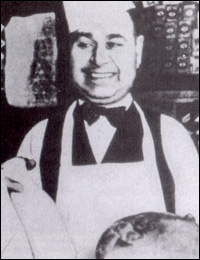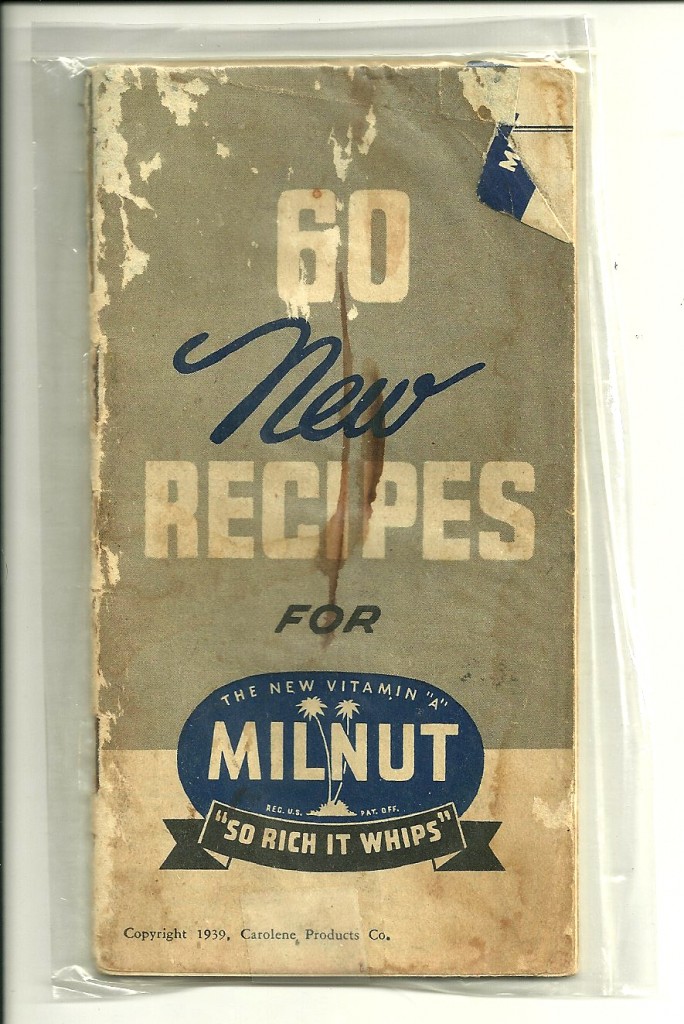Class 19
Due Process Clause II
- Meyer v. State of Nebraska (883 – 886)
- Justice Holmes’s dissent to Meyer v. State of Nebraska (Supplement)
- Pierce v. Society of Sisters (886 – 888)
- Buck v. Bell (Supplement)
- Nebbia v. People of State of New York (892 – 897)
- West Coast Hotel v. Parrish (897 – 901)
- United States v. Carolene Products (901 – 905)
- Lee Optical of Oklahoma v. Williamson (910 – 915)
- Williamson v. Lee Optical of Oklahoma (916 – 917)
- Milnot Company v. Richardson (918 – 921)
The lecture notes are here.
Pierce v. Society of Sisters
This is the Hill Military Academy, a private school shut down due to the compulsory education law.
Buck v. Bell
This is Carrie Buck. Why was she designated as “feebleminded”? Because she had an “illegitimate child,” and they charged her with “promiscuity.” The pregnancy resulted from a rape.
This is Carrie Buck with her mother, Emma Buck.
This is Dr. J. H. Bell, the superintendent at the Virginia State Colony for Epileptics.
This is the courthouse in Amherst County, Virginia where Buck’s case was first “heard”:
This is the “State Colony for Epileptics and Feebleminded,” where Carrie Buck was sterilized in the wake of Buck v. Bell.
Here is a rendering of Carrie’s Buck family tree, as performed by Dr. Harry H. Laughlin. F stands for “feebleminded.” Notice That Carrie Buck is designated with an F, her mother Emma was designated with an F, and her daughter, Vivienne, was designated with an F. There you have three generations of imbeciles. Enough.
Haughlin, impressed that Nazi Germany adopted his ideas, had this to say:
The fact that a great state like the German Republic, which for many centuries has helped furnish the best that science has bred, has in its wisdom seen fit to enact a national eugenic legislative act providing for the sterilization of hereditarily defective persons seems to point the way for an eventual worldwide adoption of this idea.
In 1936, Laughlin was invited by the Nazis to receive an honorary degree of Doctor of Medicine at the University of Heidelberg for his work in the “science of racial cleansing.”
During the Nuremberg trials, attorneys for the Nazis read from Justice Holmes’s opinion to illustrate that the Germans did not invent eugenics.
Here is Carrie Buck shortly before she died.
Here are several pieces of American propaganda about Eugenics.
This one says, “Some people are born to be a burden on the rest. Learn about heredity. You can help to correct these conditions.”

This piece of propaganda says “Eugenics is the self direction of human evolution.”
Speaking of social darwinism, and surivival of the fittest, here is Justice Oliver Wendell Holmes, Jr., who firmly believed that “Three generations of imbeciles are enough.”
Buck’s daughter, Vivian, was raised by foster parents, This is Vivian at 6 months old. She flunked her IQ test. So she was also deemed an imbecile:
It was Estabrook’s habit to photograph the subjects of his eugenical family studies, and one surviving photo shows Alice Dobbs holding Carrie’s baby. It appears that Mrs. Dobbs is holding a coin in front of Vivian’s face in an attempt to catch her attention. The baby looks past her, staring into the distance, apparently failing the test. Estabrook described that moment during his testimony at trial a few days later: “I gave the child the regular mental test for a child of the age of six months, and judging from her reaction to the tests I gave her, I decided she was below the average.”
In case you were wondering, the child was not an imbecile. Here is her report card from first grade. She was a solid B student, with an A in deportment, and on the honor roll.
Vivian died at the age of 8 due to intestinal diseases.
Despite her sterilizations, Buck would go on to be married, twice. First to William Eagle.
25 year after William’s death, Buck married Charlie Deatmore.
Here is Carrie Buck shortly before she died.
Here is a sign in Virginia to commemorate Buck v. Bell.
Nebbia v. New York
Grocer Leo Nebbia, holding a bottle of milk and a loaf of bread. The government fixed the price of milk at nine cents per quart. Nebbia tried to get around that rule with a deal: if customers bought two quarts of milk at eighteen cents (the regulated price), they would receive a free loaf of bread, which was worth five cents.

West Coast Hotel v. Parish
This is the West Coast Hotel is Wenatchee, Washington.
United States v. Carolene Products
First, here is Carolene Product’s famous footnote four:
There may be narrower scope for operation of the presumption of constitutionality when legislation appears on its face to be within a specific prohibition of the Constitution, such as those of the first ten amendments, which are deemed equally specific when held to be embraced within the Fourteenth. See Stromberg v. California, 283 U.S. 359, 369-370; Lovell v. Griffin, 303 U.S. 444, 452.
It is unnecessary to consider now whether legislation which restricts those political processes which can ordinarily be expected to bring about repeal of undesirable legislation, is to be subjected to more exacting judicial scrutiny under the general prohibitions of the Fourteenth Amendment than are most other types of legislation. On restrictions upon the right to vote, see Nixon v. Herndon, 273 U.S. 536;Nixon v. Condon, 286 U.S. 73; on restraints upon the dissemination of information, see Near v.Minnesota ex rel. Olson, 283 U.S. 697, 713-714, 718-720, 722; Grosjean v. American Press Co., 297 U.S. 233; Lovell v. Griffin, supra; on interferences with political organizations, see Stromberg v.California, supra, 369; Fiske v. Kansas, 274 U.S. 380; Whitney v. California, 274 U.S. 357, 373-378;Herndon v. Lowry, 301 U.S. 242; and see Holmes, J., in Gitlow v. New York, 268 U.S. 652, 673; as to prohibition of peaceable assembly, see De Jonge v. Oregon, 299 U.S. 353, 365.
Nor need we enquire whether similar considerations enter into the review of statutes directed at particular religious, Pierce v. Society of Sisters, 268 U.S. 510, or national, Meyer v. Nebraska, 262 U.S. 390; Bartels v. Iowa, 262 U.S. 404; Farrington v. Tokushige, 273 U.S. 484, or racial minorities,Nixon v. Herndon, supra; Nixon v. Condon, supra: whether prejudice against discrete and insular minorities may be a special condition, which tends seriously to curtail the operation of those political processes ordinarily to be relied upon to protect minorities, and which may call for a correspondingly more searching judicial inquiry. Compare McCulloch v. Maryland, 4 Wheat. 316, 428; South Carolinav. Barnwell Bros., 303 U.S. 177, 184, n. 2, and cases cited.
I have collected a fortune of information about Carolene Products, Charles Hauser (the President), and his return trip to the Supreme Court which resulted in an affirmed conviction, and a pardon by President Roosevelt. Three decades later, a district court in Illinois found the federal Filled Milk Act Unconstitutional.
As a result of United States v. Carolene Products (1938), the Carolene Products company changed the name of their product from “Carolene” to “Milnut” at some point in 1938. I previously acquired a Carolene Products Cookbook from 1939, labelled as “Milnut.”
Now, thanks to a successful eBay bid, I am the proud owner of a Carolene Products cookbook from 1937 (before the Supreme Court case!). It is labelled as “Carolene” with the same logo.
Note how it is called a “Scientific Milk Product.” After 1938, the advertisements did not call it “Milk” to avoid problems under the Federal, and state Filled Milk Acts.
Who want’s some frizzled dried beef or baked ham slice?
As well, here is the history of the Carolene Products company from MilnotMilk.com, with some interesting photos.
The Seneca plant that was built right on the border with Oklahoma, in a means to work around (literally) the Filled Milk Act. I have more details on the Seneca plant here. The plant is still in operation today, operated by the Sumker’s company (you can order Milnot online! – I have a case).
Here is a copy of FDR’s pardon of Charles Hauser, President of the Carolene Products company.
Here is a copy of the remission of imprisonment, which I received from Hauser’s granddaugther. Note that the year 1944 is printed, and someone scribbled over it 1945.
Williamson v. Lee Optical


Here is how a lensometer works.































